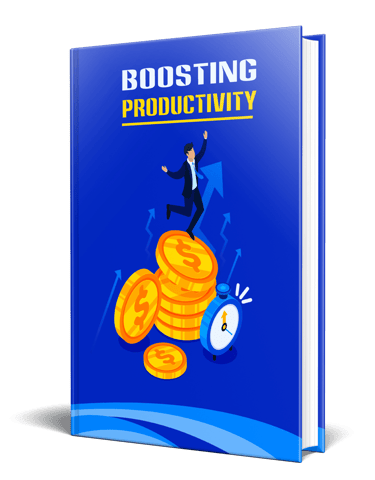Tools and Techniques for Self-Assessment
Self-assessment empowers individuals to understand themselves deeply, aiding in informed decision-making and personal growth. Techniques like journaling, personality assessments, seeking feedback, and SWOT analysis provide structured approaches to introspection. By embracing these tools, individuals can navigate their strengths, weaknesses, and opportunities, leading to enhanced well-being and success.
SELF ESTEEMHABITS


Introduction
Self-assessment is a valuable practice that allows individuals to gain a deeper understanding of themselves, their strengths, weaknesses, and areas for improvement. By engaging in self-assessment, individuals can make informed decisions, set meaningful goals, and enhance their personal and professional development. In this blog post, we will explore various tools and techniques that can be used for self-assessment.
A. Journaling prompts for reflection
Journaling is a powerful tool for self-reflection and self-discovery. By putting pen to paper, individuals can explore their thoughts, emotions, and experiences in a structured and introspective manner. Journaling prompts provide specific questions or topics to guide the reflection process.
For example, some journaling prompts may include:
What are my greatest strengths and how have they contributed to my success?
What are my biggest challenges and how can I overcome them?
What are my short-term and long-term goals and how can I achieve them?
What values are most important to me and how do they align with my actions?
By regularly engaging in journaling and using prompts for reflection, individuals can gain valuable insights into their thoughts, feelings, and aspirations.
B. Personality assessments
Personality assessments are widely used tools for self-assessment. They provide individuals with insights into their personality traits, preferences, and behaviors. Two popular personality assessments are the Myers-Briggs Type Indicator (MBTI) and the Big Five Personality Traits.
The Myers-Briggs Type Indicator categorizes individuals into sixteen different personality types based on four dichotomies: extraversion (E) vs. introversion (I), sensing (S) vs. intuition (N), thinking (T) vs. feeling (F), and judging (J) vs. perceiving (P). This assessment helps individuals understand their preferences in areas such as communication, decision-making, and problem-solving.
The Big Five Personality Traits assess five broad dimensions of personality: openness to experience, conscientiousness, extraversion, agreeableness, and neuroticism. By understanding their scores on each dimension, individuals can gain insights into their personality traits and how they relate to various aspects of their lives.
Personality assessments can provide individuals with a valuable starting point for self-assessment, enabling them to better understand their strengths, weaknesses, and areas for personal growth.
C. Feedback from peers, mentors, and supervisors
Feedback from others is an essential tool for self-assessment. Peers, mentors, and supervisors can provide valuable insights into an individual's strengths, weaknesses, and areas for improvement.
Seeking feedback from others requires open-mindedness and a willingness to learn and grow. It is important to create a safe and supportive environment where individuals feel comfortable providing honest feedback. Feedback can be obtained through one-on-one conversations, structured feedback sessions, or anonymous surveys.
When receiving feedback, it is crucial to approach it with a growth mindset. Rather than viewing feedback as criticism, individuals should see it as an opportunity for self-improvement. Reflecting on feedback and taking actionable steps based on it can lead to personal and professional development.
D. SWOT analysis (Strengths, Weaknesses, Opportunities, Threats)
A SWOT analysis is a structured tool for self-assessment that helps individuals identify their strengths, weaknesses, opportunities, and threats. It provides a comprehensive view of the internal and external factors that can impact an individual's personal and professional life.
Strengths: This category focuses on an individual's positive attributes, skills, and qualities. Identifying strengths can help individuals leverage them to achieve their goals and overcome challenges.
Weaknesses: This category highlights areas where individuals may have limitations or areas for improvement. Recognizing weaknesses allows individuals to develop strategies to address them and enhance their overall performance.
Opportunities: This category explores external factors that can be advantageous to an individual's personal or professional growth. Identifying opportunities enables individuals to capitalize on them and maximize their potential.
Threats: This category examines external factors that may pose challenges or obstacles to an individual's success. Identifying threats helps individuals develop contingency plans and strategies to mitigate their impact.
A SWOT analysis can be conducted by creating a grid with four quadrants for strengths, weaknesses, opportunities, and threats. By systematically analyzing each category, individuals can gain a holistic understanding of themselves and their environment.
Conclusion
Self-assessment is a valuable practice that can lead to personal and professional growth. By utilizing tools and techniques such as journaling prompts, personality assessments, feedback from others, and SWOT analysis, individuals can gain valuable insights into themselves, their strengths, weaknesses, opportunities, and threats. Engaging in self-assessment allows individuals to make informed decisions, set meaningful goals, and enhance their overall well-being and success.


